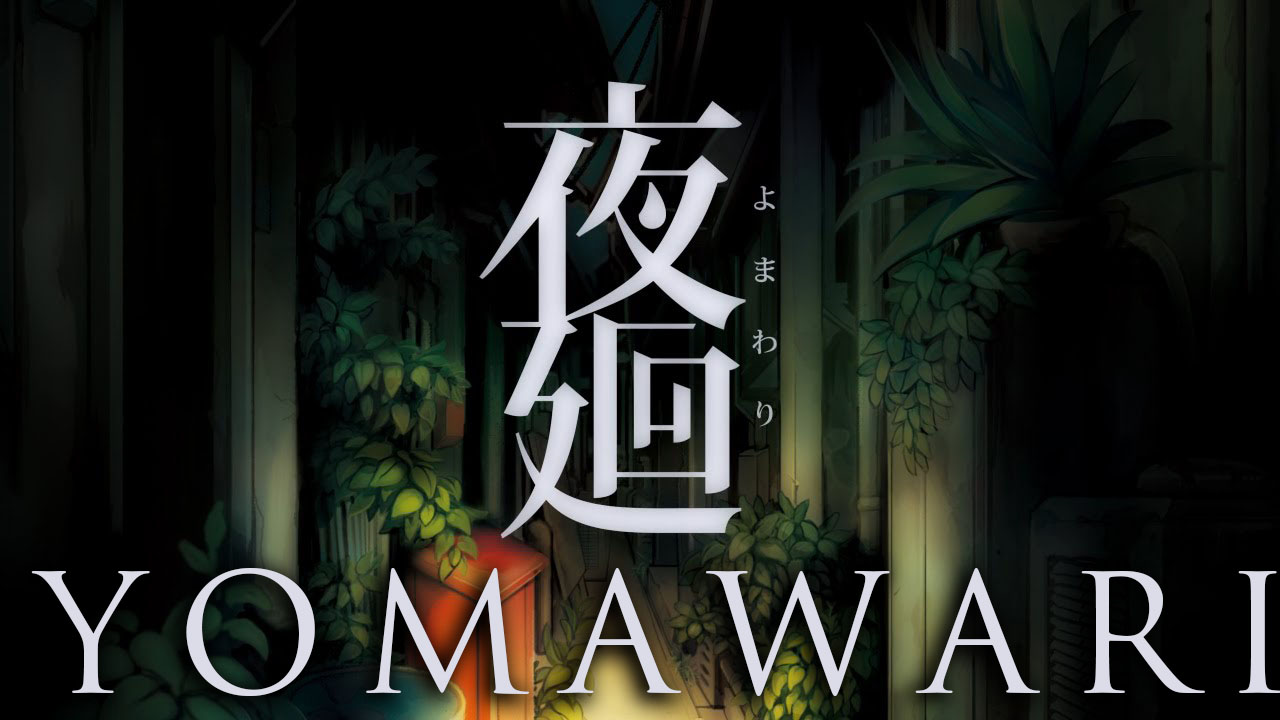If you’re like me, you hate horror games. Not because they scare you to the point of wetting yourself, or because they bore you to the point of suicide — those are valid reasons. Instead, you hate them because they are currently flooding the market to such a nauseating extent that you’re probably finding random games popping up in your toilet bowl. Which is appropriate, because most of them are sh*t.
This is a good reason why most of us probably missed this small, yet beautiful, horror game called Yomawari: Night Alone. (Or maybe you missed it because you can’t read Japanese.) Either way, it’s a shame –because it’s a pretty darn good horror game, one of the better ones I’ve played all year.

Chapter One: First Impressions
This is a game made by Nippon Ichi Software, Japanese development company that’s quite well known for making great games no one seems to know about — like Desgea: Hour of Darkness.
Yomawari is one of their newest installments, and holds a certain emotional sway from the get-go.
The game is simplistic in nature, and opens up with an equally simplistic concept; you need to walk the dog. You play as a small 11 year old girl in a dark town. The dog disappears and your big sister promises to go and look for him, but she doesn’t come back.
Now it’s up to you, small girl, to go and find your big sister and your dog.
Right off the bat, many players will be reminded of another indie game, Limbo. The gameplay and story really just sing it in the first few minutes, and that emotion echoes long after. It grabs that same tone and dark atmosphere, and that alone kept me going. It’s dark, it’s gritty — but the art style is smooth, soft and almost sweet.
Just a perfect combination, through and through.
Something I will mention is the story: There is very little, which is perfect. It’s easier to put yourself in those tiny shoes when you can relate to such a basic situation. No Cthulhu mystery, no amnesia, no zombies. Just a small girl looking for her big sister in a dark, terrifying town.
The finer details are really well-implemented, like the map which looks like a child’s drawing. Those small touches really made the game pop for me.

Chapter Two: Gameplay
As stated, this game is simplistic. And being on the PlayStation Vita, it doesn’t really scream innovation. But it’s how the elements are portrayed that makes the game good. The gameplay is solid, with excellent sound and even better monsters, and plays as well as expected.
You are consistently dodging eerie creatures that are wandering the streets. Monstrous dogs, living shadows, and a creature straight from Paranoia Agent…there is a lot to keep you running. Like Mary-san. Oh, damn you, Mary-san.
The monsters are very reminiscent of known Japanese ghosts, which is great. Though they can be a little goofy, it doesn’t really break the immersion of the game.

It’s thick with tension, punctuated by jarring jump-scares.
Later on, the monsters become more intelligent, more determined, and some areas are very unforgiving. The game almost demands you know it by heart. This can be fun, but with horror games it can become tiresome due to the high tension it generates.
There is, of course, a stamina bar. This doesn’t hurt the gameplay, and makes it quite stressful with thick heartbeats to help you determine the character’s current disposition. My hands would often sweat enough that I could barely hold the damned console. Which is what I expect in a horror game.
Right around the end of the first act, the game really picks up. As a horror fan who likes to go in blind, I won’t give too much away — but this is the point where most of the Ghibli-like emotions begin to stir.
Tragic horror is one of the best types of horror. To write a game that invokes more than fear is a fine achievement, and this little gem has it in spades. I often found myself frowning at the screen in shock or empathy. It holds a very tragic element and really pulls at the heart, even with its jarring imagery. But perhaps that is why it is so tragic. You know somewhere inside, that a little girl shouldn’t be out alone at night, but you’re right there with her because you want to see her get home safe.

Chapter Three: Conclusion
Yomawari is a good game — a great game if you’re a horror fan. But there are some downfalls to this near-perfect little package.
First and foremost, the price. At $59.99, it’s a bit steep for a game that is about 4 hours long — 6 if you’re terrible like me. The game is still in Japanese, which is a pain, but thankfully I had a translator next to me.
That said, the game’s ending was great in every sense of the word. It captured the essence of a good story, and gave it to you in a simple package. The clear contrast between light and dark is something truly amazing, and once again, very reminiscent of Ghibli.
Why should most horror-games have dark endings? For most people the ending of books, movies, and games, is the deciding factor for whether they will sit through it again. Give them a depressing, dark or bad ending, and most people will say, nay.
The only way to truly experience darkness, is to have a light you are running to that will emphasize it. To snuff out the light before you reach it, just makes everything dark, and you leave us in a depressed mess.
Yomawari: Night Alone thankfully, does not suffer from this. It is an excellent game for any horror collection, and for anyone who loves a good story.







Published: Mar 14, 2016 10:48 am